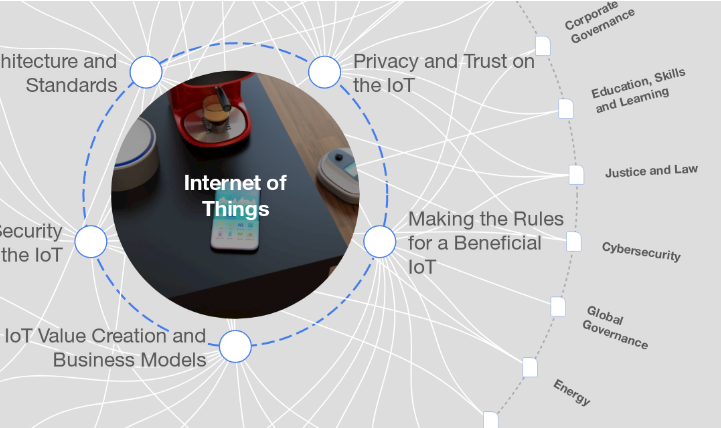GRAPHENE "CONSPIRACY"
TestNPAss diagnostic test requires a nasal sample to detect SARS-CoV-2 infection rapidly. It is a single-use test using a graphene biosensor sensitized by antibodies recognizing the virus's S protein. The test operates without a battery and uses contactless near-field communication via a smartphone application.
contactless near-field communication via a smartphone application
http://web.archive.org/web/20210227025421/https://www.grapheal.com/about-our-solution The solution TestNPass | Grapheal
“OUR MISSION IS TO BUILD A NEW GENERATION OF DIGITAL BIOSENSORS TO REMOTEDLY DIAGNOSE AND MONITOR PATIENTS.”
To do this we exploit graphene’s uniquely high electrical conductivity
“This new graphene-based biosensors will accelerate our return to normality”
https://www.youtube.com/watch?v=6AW3EQy94vI Graphene in Healthcare - GRAPHEAL https://www.youtube.com/watch?v=ZtjnkHqWkPw Graphene For Personalized Healthcare Wound Healing & Diagnostics
https://www3.weforum.org/docs/WEF__Shaping_the_Future_of_Health_Council_Report.pdf Insight Report Health and Healthcare in the Fourth Industrial Revolution Global Future Council on the Future of Health and Healthcare 2016-2018 April 2019
PLEASE HAVE A LOOK AT THIS “Insight Report Health and Healthcare in the Fourth Industrial Revolution Global Future Council on the Future of Health and Healthcare 2016-2018”, STARTING FROM PAGE 25 (Nanotechnology, Medical ‘Things’ and the Internet of Things, Telemedicine, ETC.)
https://www.weforum.org/search?query=graphene
https://www.weforum.org/agenda/2012/05/small-is-beautiful-materials-by-design/ Small is beautiful: Materials by design
"Ten years ago, this all sounded like science fiction. But since then, governments have invested nearly $70 billion in nanotechnology research, eager to be at the forefront of this revolution. It will resemble the transition from horses to the internal combustion engine or from vacuum tubes to silicon chips; a transformation enabling new industries to flourish."
"Doctors in your body ... by scaling this technology, we could go further, implanting or injecting tiny sensors inside our bodies."
This nanotechnology, according to the World Economic Forum, would also be used to "fight climate change," or for "neurotechnological brain enhancement." "Genetic editing. It is already changing our health and leading to a 'quantified' self, and sooner than we think it may lead to the agumentation (technological enhancement) of humans." (Klaus Schwab)
https://www3.weforum.org/docs/WEF_The_Impact_of_5G.pdf 5G-Next Generation Networks Programme
https://www.weforum.org/search?query=NANOTECHNOLOGY NANOTECHNOLOGY – | World Economic Forum (weforum.org)
BUT…
GRAPHENE FAMILY NANOMATERIALS (GFNs) can be delivered into bodies by intratracheal instillation, oral administration, intravenous injection, intraperitoneal injection and subcutaneous injection. GFNs can induce acute and chronic injuries in tissues by penetrating through the blood-air barrier, blood-testis barrier, blood-brain barrier, and blood-placenta barrier etc. and accumulating in the lung, liver, and spleen etc.
GFNs penetrate THROUGH THE PHYSIOLOGICAL BARRIERS or cellular structures by different exposure ways or administration routes and entry the body or cells, eventually resulting in toxicity in vivo and in vitro.
In addition, graphene quantum dots (GQDs), with a small size of less than 100 nm, can cross through the blood-brain barrier.
Much attention had been paid to the developmental toxicity of nanomaterials, and reports showed that many nanoparticles did cross the placental barrier and strongly influenced the development of embryos.
The different administration routes influence the distribution of GFNs, for example, intratracheally instilled FLG passing through the air-blood barrier mainly accumulated and was retained in the lungs, with 47 % remaining after 4 weeks. Intravenously administered GO entered the body through blood circulation and was highly retained in the lung, liver, spleen and bone marrow, and inflammatory cell infiltration, granuloma formation and pulmonary edema were observed in the lungs of mice after intravenous injection of 10 mg kg/body weight GO.
Macrophages were observed to undergo prodigious morphological changes upon contact with GO. After internalization, graphene accumulated in the cell cytoplasm, perinuclear space, and nucleus, which induced cytotoxicity in murine macrophages by increasing intracellular ROS through depletion of the mitochondrial membrane potential and by triggering apoptosis through activation of the mitochondrial pathway.
GO reportedly disrupted the alveolar-capillary barrier, allowing inflammatory cells to infiltrate into the lungs and stimulate the release of pro-inflammatory cytokines. Fibrosis and inflammation could be verified by the increased levels of the protein markers collagen1, Gr1, CD68 and CD11b in the lungs.
The condition is different in the female mouse: mouse dams could give birth to healthy offspring after rGO injection before mating or during early gestation, and only a few abnormal fetuses were present among the rGO-injected dam litters. However, the pregnant mice had abortions at all dose, and most pregnant mice died when the high dose of rGO was injected during late gestation. Notably, the development of offspring in the high dosage group was delayed during the lactation period. The high dose of GO decreased the maternal mice’s water consumption by oral exposure, which reduced milk production and thus postponed the growth of offspring. Though the findings indicate that GFNs are potentially harmful to development
The developmental toxicity of GFNs may induce structural abnormalities, growth retardation, behavioural and functional abnormalities, and even death.
The cytotoxicity of GFNs in vitro has been verified in various cells to change the cell viability and morphology, destroy the membrane integrity, and induce DNA damage. GO or rGO decrease cell adhesion; induce cell apoptosis; and enter lysosomes, mitochondria, cell nuclei, and endoplasm. GQDs entered cells and induced DNA damage by the increased expression of p53, Rad 51, and OGG1 proteins in NIH-3 T3 cells.
Numerous results have shown that graphene materials cause dose dependent toxicity in animals and cells, such as liver and kidney injury, lung granuloma formation, decreased cell viability and cell apoptosis.
The physical interaction of graphene nanoparticles with cell membranes is one of the major causes of graphene cytotoxicity. Graphene has high capability to bind with the αhelical structures of peptides because of its favorable surface curvature.
Furthermore, the sharpened edges of GNS may act as ‘blades’, inserting and cutting through bacterial cell membranes. Moreover, GO also damaged the outer membrane of E. coli bacteria directly, resulting in the release of intracellular components.
Oxidative stress had a significant role in GO-induced acute lung injury, and the inflammatory responses caused by oxidative stress often emerged upon exposure to GFNs. The activity of SOD and GSH-PX decreased after exposed to GO in a time- and dosage-dependent manner. Similarly, oxidative stress was the key cause of apoptosis and DNA damage after HLF cells were exposed to GO.
Moreover, a functionalized graphene surface can improve its biocompatibility, but the long-term stability of the surface coatings should be considered. If the surface coatings eventually break down, their toxicity may be significantly different from the short-term exposure results.
Extended studies are needed to determine if longer treatment times influence the nanotoxic potential of GFNs.
https://www.ncbi.nlm.nih.gov/pmc/articles/PMC5088662/#CR234 Toxicity of graphene-family nanoparticles: a general review of the origins and mechanisms - PMC (nih.gov)











the adult equivalent of razor blades in Halloween candy.
Check out Dr Andreas Noack on Bitchute who made an impassioned plea, Nov 2021, re this substance and what it can do. Afew days later, he was dead.